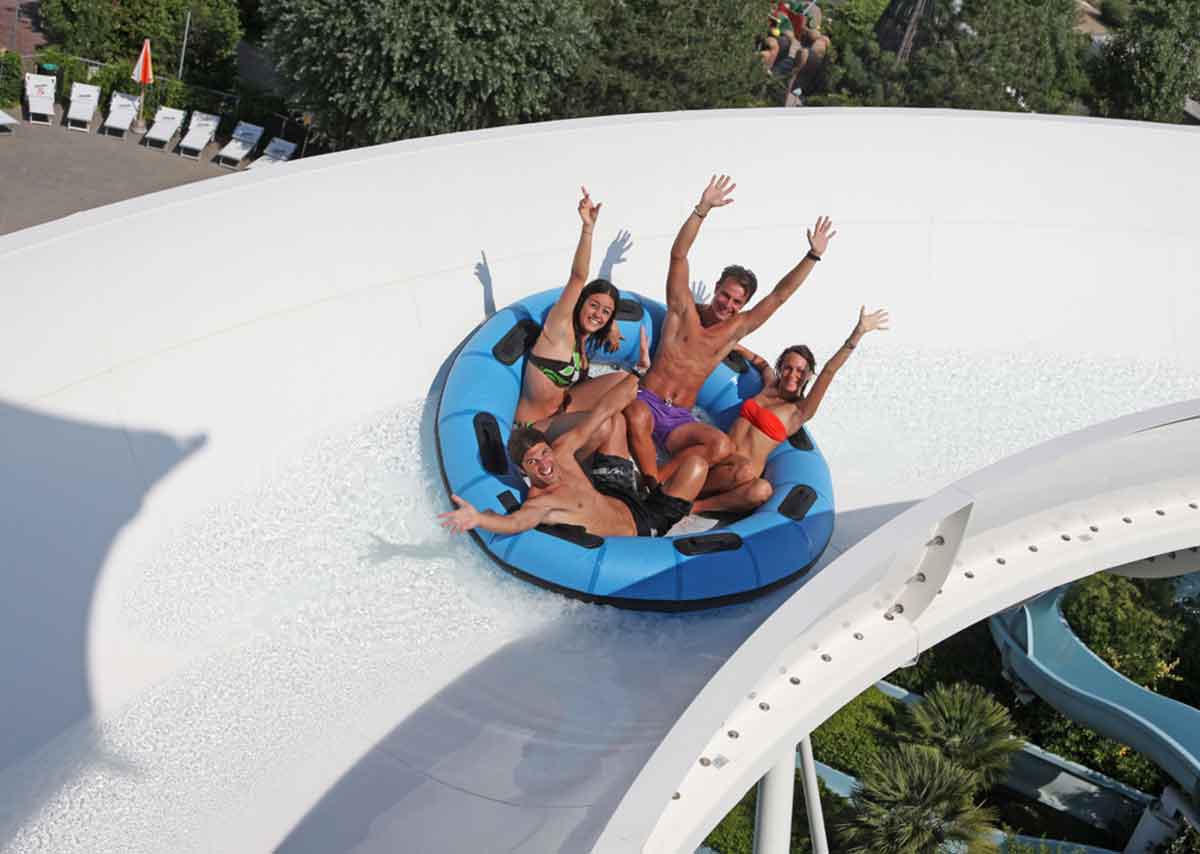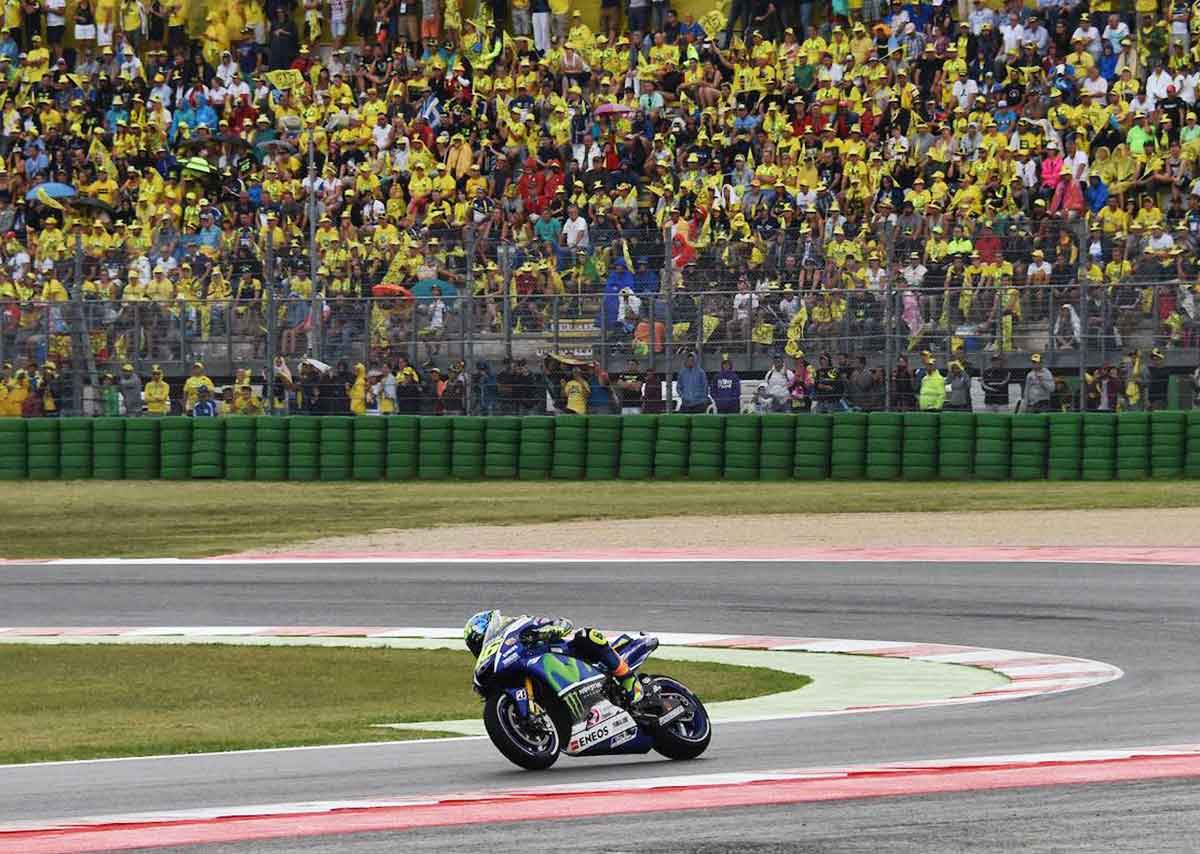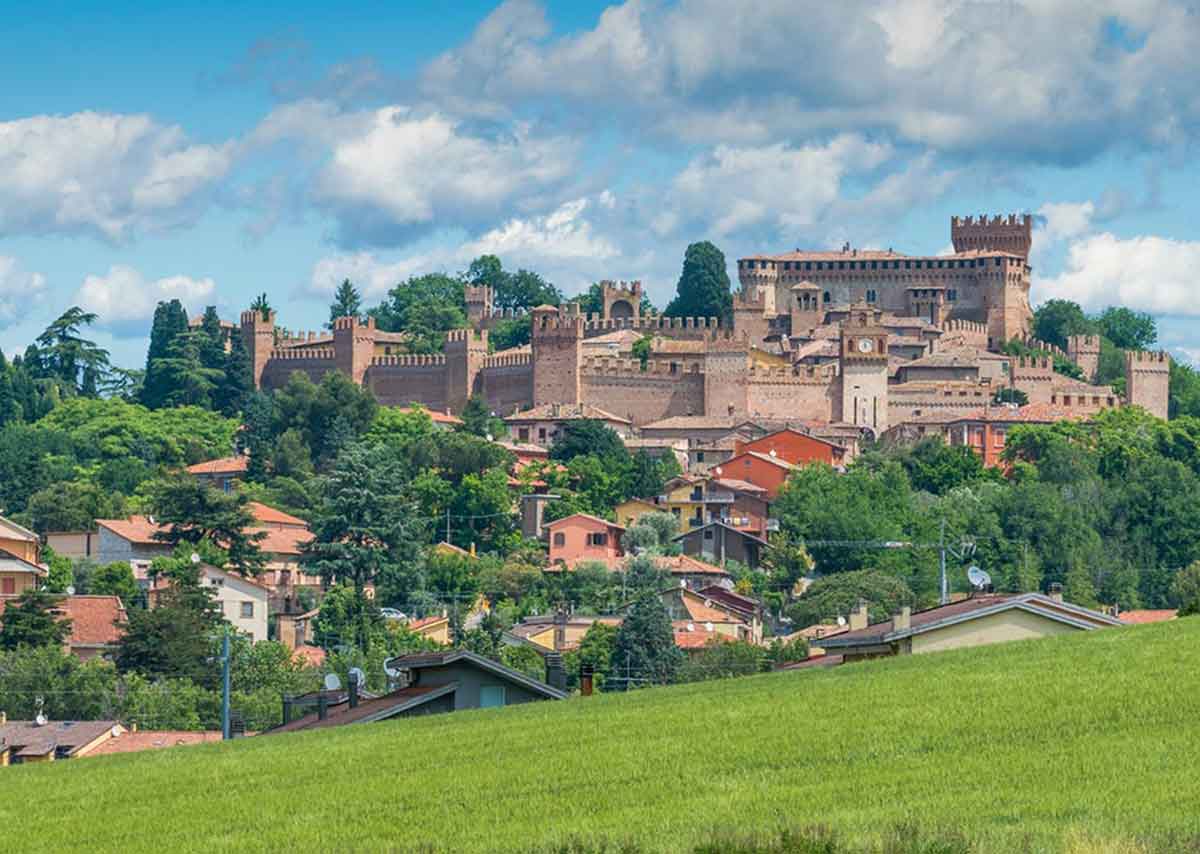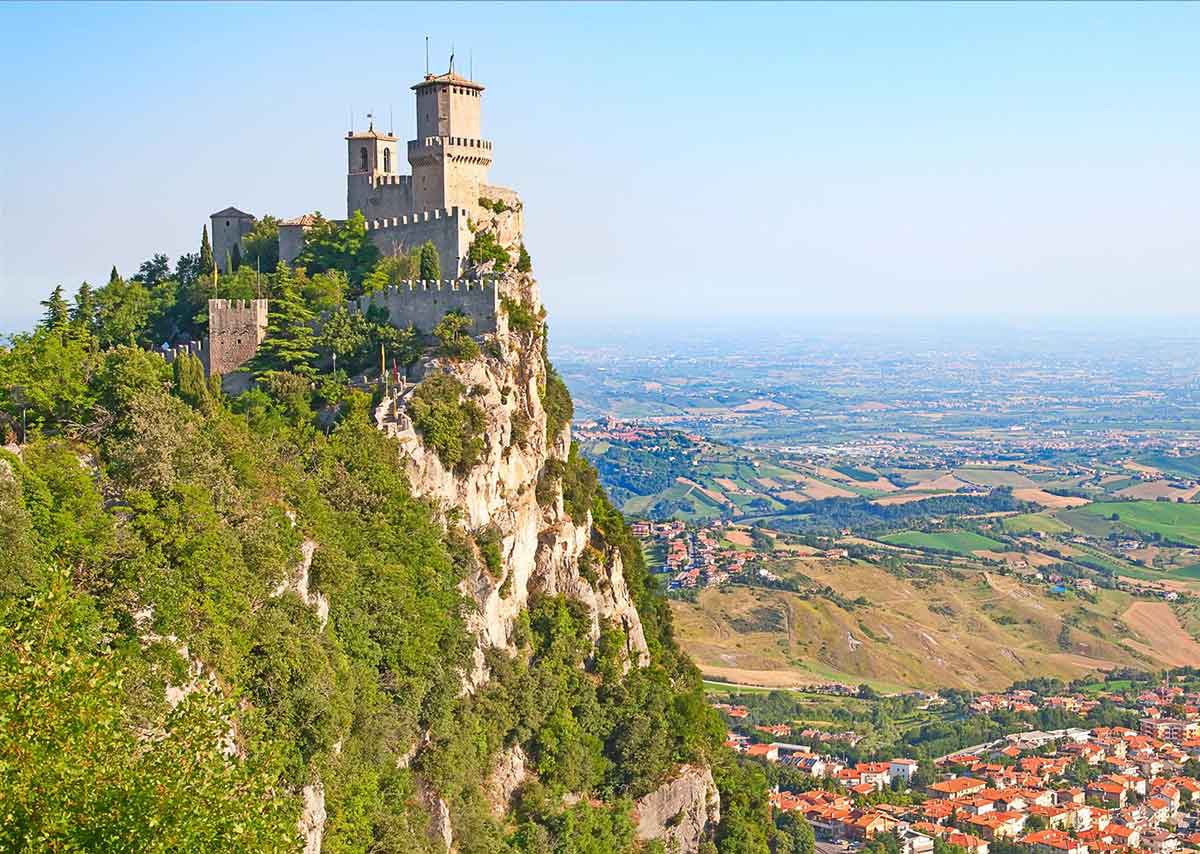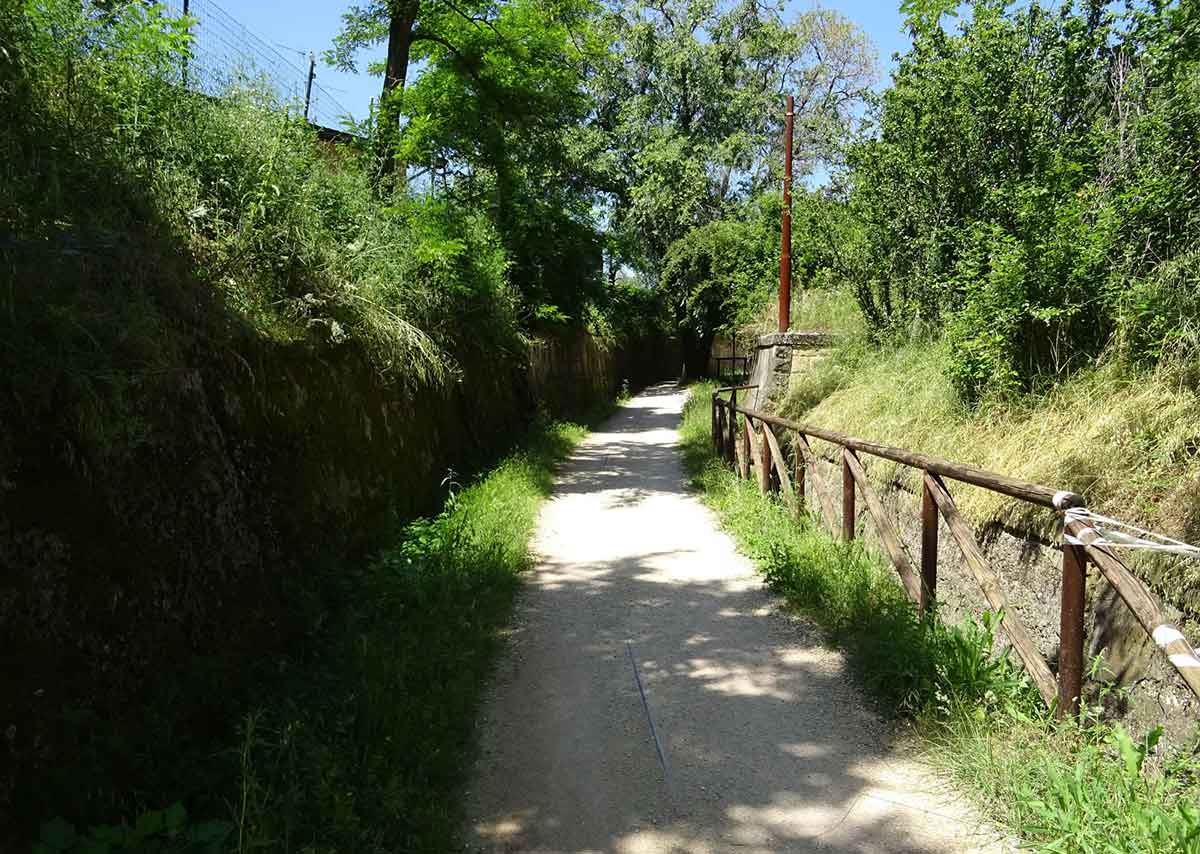Lots of activities available
The unforgettable Riviera Romagnola
The Romagna Riviera is a 90 km stretch of coast that overlooks the Adriatic Sea, begins at the mouth of the Reno River and ends in Gabicce Mare, in the Marche region.
It touches the provinces of Ravenna (Lidi Ravennati, Cervia), Forlì-Cesena (Cesenatico, Gatteo Mare, Savignano Mare, San Mauro Mare) and Rimini (Bellaria Igea Marina, Rimini, Riccione, Misano Adriatico, Cattolica).
Known as one of the most famous seaside areas in Italy, the “tourist” Riviera of Romagna ranges from the wild beaches of the Ravenna beaches , to the glamorous Milano Marittima and Riccione . In the “middle” there are the Rimini of the great summer events and fun for everyone, Cesenatico with its strong maritime tradition and Cervia with dotted beaches from pine forests and salt marshes.
A journey along the Romagna Riviera full of amusement parks and water parks: the Aquafan in Riccione, Mirabilandia in Rimini, Oltremare in Riccione.
In Emilia Romagna we find the Aquafan of Riccione, the mythical water park of the Riviera, born in 1987, and in continuous growth. The best known amusement park in Europe with ever new water features, more parking and continuous surprises every day and every night.
Weekend full of emotions
MotoGP Misano: Grand Prix of San Marino and the Riviera of Rimini
The great sporting event of the Misano World Circuit much awaited by two-wheel enthusiasts. It is the second race on Italian soil, a weekend full of emotions and entertainment.
It has always been a race that excites and involves, thanks to the atmosphere created around this event. The Romagna Riviera is the land of engines and here drivers like Valentino Rossi, Andrea Dovizioso and the young Bastianini and Antonelli give their best for the home crowd.
To make the weekend of the San Marino GP even more special are the many collateral events that accompany the tests and the race.
The MotoGP Misano 2020 is held at the Misano World Circuit on the weekend from 11 to 13 September and seven days later (20 September) will be the time for the Grand Prix of Emilia Romagna and the Rimini Riviera.
From the Middle Ages
Montefeltro, between woods and medieval villages
Montefeltro, which historically corresponds to an important diocese established in the middle of the Middle Ages, is a historical center-north region that has no precise boundaries, nor is it unified from an administrative point of view.
In general, its territory includes the Marecchia, Conca, Foglia valleys and a stretch of the Savio Valley, thus occupying a surface that coincides with the entire north-western area of the province of Pesaro-Urbino, albeit with some trespassing in Romagna and Tuscany. From here you can enjoy a wonderful view of the surrounding area, up to San Leo and San Marino and Gradara .
The landscapes, largely rugged, surprise for the vastness of the preserved spaces, in which the massive figure of Mount Carpegna is always placed, located almost in the center of the region and a reference point for every traveler.
There is no shortage of woods, which intensify as we proceed towards the Apennines, while villages of medieval origin, towers, vestiges of castles sprout almost everywhere. This is what remains of the fortified systems prepared by the Malatesta of Rimini and the Montefeltro of Urbino.
Surrounded by nature
Path of the Old Railway
Through the green and gentle hills of the north-eastern part of the San Marino territory the path, equipped with a cycle path, runs along a section of the old railway line that connected Rimini with San Marino which has been in disuse since 1944: tracks, railway poles and retaining walls still well preserved are a trait-d'union with the past, for a relaxing and reminiscent excursion through time and greenery.
In front of Podere Lesignano there is a cycle path that runs along the route of the old railway that connected San Marino to Rimini.
From Strada Paradiso, in Domagnano, the route begins close to an interesting archaeological site where the remains, now preserved in the State Museum, of a Roman urban-rustic villa, part of which was restored and used in the Goth age, were brought to light.
The route descends gently along the old tracks, cutting the fields cultivated with rows of elms, hawthorns and some old oaks.






